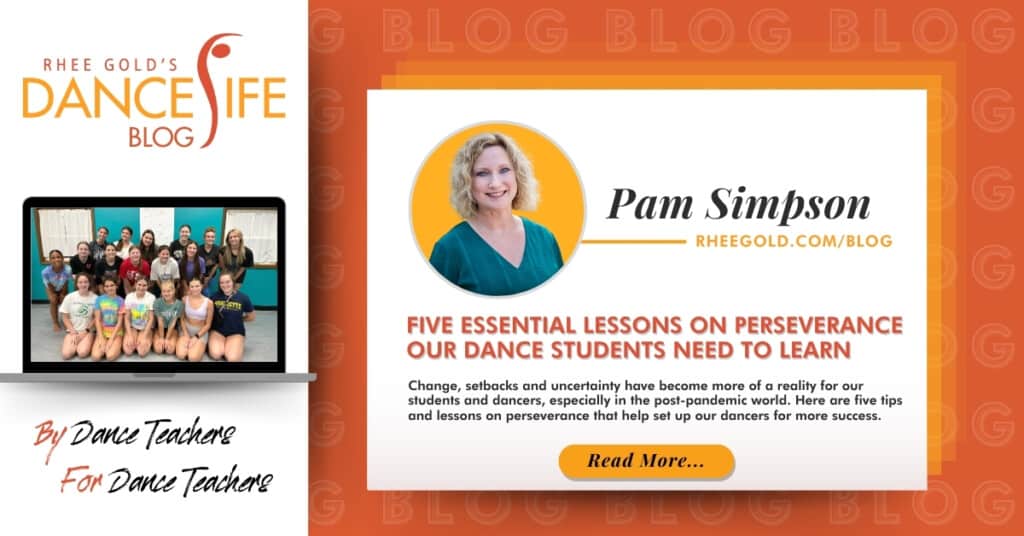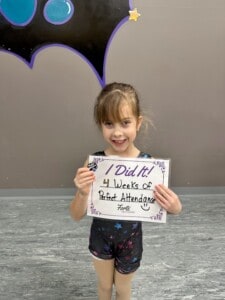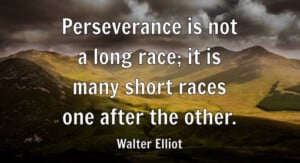Five Essential Lessons on Perseverance Our Dance Students Need to Learn

In the ever-changing landscape of a post-pandemic world, our students are facing unique challenges that call for resilience and determination. The COVID-19 pandemic has disrupted routines, affected mental health, and raised uncertainty levels. To equip our young dancers for success in this new reality, we must focus on teaching them five crucial lessons about perseverance. January is the perfect time to do this as we start a new year!
1. Adaptability: Adaptability in the Face of Change
The pandemic taught us the importance of adaptability. Teaching our students
perseverance is about showing them that they can adapt to unexpected changes. By instilling this trait, we empower them to face the uncertainties of the future with confidence. We’ve learned change is the only constant. Our dance students need to understand that adaptability is key to thriving in the post-pandemic era. Teaching them to embrace change, pivot when necessary, and find new solutions fosters perseverance by showing them that they can overcome any challenge. Find ways to incorporate this into your lesson plans. It could be as simple as changing up where you start your across the floor exercises, having students face the back for warm-up, or challenging them to reverse a combination on the spot.
Being cautious with the words we use in class while teaching is another way to adapt your teaching style. Especially with our younger students. Some ideas may include:
● Avoid using phrases like
○ “You’ll never get it if you do it that way” “NO That’s not right” “ You
can’t do this… if you don’t do that” “You’re doing it wrong”, “I keep
telling you to do it this way”
● Use words like:
○ “Try again” “You can do it” “I see that you’re doing it this way, why don’t
you try it this way, It will be easier, make you stronger, connect your
steps, fix your turn out, etc” look at what we are teaching in a different
way. They may hear us teach it and give corrections, but they may not
know how to apply it to their bodies.
● Use words to make corrections and connections in a positive and achievable
way so all students will feel like they can achieve it at some point.
2. Resilience: Bouncing Back from Setbacks
Resilience is the ability to bounce back from setbacks and is closely tied to perseverance. Our students need to understand that setbacks are a part of life, and it's how they respond to these setbacks that matters. . Encourage them to bounce back stronger after every fall, both in dance and in life.
Resilience is closely tied to perseverance. Perseverance helps them build resilience, enabling them to rise stronger after adversity. We must teach our students that setbacks are not failures but opportunities for growth.
I have found this to be challenging lately with students and have been trying to share a story of a time when I had to bounce back and have resilience.
Here are a few questions we can ask our older students to start a conversation
about perseverance
- Was there ever a time you were doing something hard and you wanted to
give up? - Have you ever set a goal that was difficult to achieve?
- Have you ever been in class and felt you could not achieve a goal or
assignment set by the teacher? - How did you handle it?
These open up great discussions and help them see things in a new light.
3. Mental Health: Strengthening Mental Well-being
The pandemic took a toll on mental health, making it vital to address this aspect
when teaching perseverance. Emphasize the importance of a positive mindset,
self-care, and seeking support when needed. Resilience in mental health is a
testament to the power of perseverance.
Teaching perseverance encourages a growth mindset and positive self-talk, which can enhance mental well-being. It reminds students that they have the inner strength to overcome obstacles. The most beneficial lessons here I have found are teaching them about a growth mindset and reminding them often about it as they drift. I see students spiral into a fixed mindset and start to spiral out of control mentally more than I have in the past. I also like to teach them some meditation and breathing techniques for when they start to feel anxious. We have also done self-love lessons with them and had them make a class poster of what they love about themselves. It is always eye-opening for them to see what others love about themselves and for them to concentrate on loving themselves.
4. Confidence: Building Confidence through Challenges
Perseverance boosts self-confidence. As students work through challenges and achieve their goals, they build a sense of accomplishment and self-belief. This newfound confidence can extend beyond the dance studio into all aspects of their lives. Encourage them to step outside their comfort zones, reminding them that each hurdle they overcome is a step towards greater self-assurance.
Each time we challenge our students to something new and see them succeed, it
boosts their confidence. This is a trait that comes naturally to us as dance teachers, but it is also easy to overlook as we strive for excellence. Make a point to stop and acknowledge progress and focus on boosting confidence in your students. Let them know you believe in them. I love the ARE method that I learned from John Maxwell; Acknowledge, Recognize, Encourage. When you acknowledge that you see them working hard, recognize the progress, and encourage them to keep going, magical things happen.
5. Goal Setting: Setting and Achieving Meaningful Goals
In a rapidly changing world, setting and achieving goals is vital. Teaching perseverance helps students set meaningful goals and equips them with the determination to pursue those goals, no matter how daunting they may seem. Perseverance becomes the driving force that enables us to pursue our goals.
Talk to your students about goals and help them set some SMART goals in your class this winter. I love to teach the SMART Goal method to my students at a young age and reinforce, remind, and activate them regularly in class. You can start by setting a class goal and then progress to having each student set one specific goal for a period of time. You will need to remind them several weeks in a row what their goal is and help them set actions that will help them reach the goal. I have recently been awarding 6-week perfect attendance in my classes and have seen students working to achieve this small goal. In the past, we did a full year or semester of perfect attendance, this is very rare these days, so a couple years ago I decided to change it to 6 week increments, and that has worked well
Once my students are older, I like to also talk to them about goal setting for their
personal life and help them stay focused on one. I recently challenged my high school group to focus on their priorities and had them set a goal to focus on their top 3. I will share more about that in next month's blog!
To impart these five essential lessons on perseverance effectively, we as dance
instructors must adapt our teaching methods. Create a nurturing environment
where students feel safe to make mistakes and learn from them. Encourage open
dialogue and discussions about their experiences to help them reflect on their
coping strategies.
Personal stories of resilience and perseverance can inspire students to believe in their own capabilities. Be sure to share where you have needed perseverance in your life. This gives you a chance to help teach your students and let them see that you are human and have had to overcome obstacles.
By incorporating these lessons into your dance curriculum, you're not only
fostering exceptional dancers but also nurturing strong individuals equipped to
thrive in a post-pandemic world.
As dance instructors, our role extends beyond teaching dance steps; we're shaping the character and resilience of our students. In the face of the profound changes brought about by the pandemic, we must focus on the five essential lessons of perseverance: adaptability, resilience, mental health, confidence, and goal setting. These lessons are the foundation upon which our dance students can build their future success, both in the studio and in life. By instilling these qualities, we empower our students to navigate the challenges of the post-pandemic world with strength, determination, and grace.
Pam Simpson is the founder, president, and driving force behind Forte Arts Center, which was established in Morris, Illinois in 1993. In addition to building her business from a small, one room studio to a large, multi-location organization that offers dance, tumbling and cheer programs as well as private music lessons, Pam is a leading force in the realm of small business ownership in the dance and tumbling industries as she travels all over the country speaking to and educating for large organizations such as Rhee Gold Company, Dance Teacher Summit, and More Than Just Great Dancing. When not working on her businesses, Pam enjoys spending time with her family and visiting her daughter, who is a performer at Walt Disney World.










